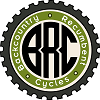BRC: “Comfort. This is mainly the reason I first considered a recumbent cycle. Having been a cyclist for most of my life (racing and touring) and riding traditional diamond framed racing or touring bikes, I, like most cyclists, had a certain attachment to my identity as a “serious” cyclist. And “serious” riders only ride “serious” (i.e. normal) diamond framed cycles. As I grew older and began to experience more discomfort on longer day rides and multi-day tours, the boundaries around the compartmentalization of what I considered “acceptable” in cycling began to expand a bit.
I think compartmentalization like this is as normal for most folks in sports as in any other area of our lives. We define ourselves by what we do more often than not and we define what we do as measured by what others do (those we look up to or hang out with). If you look up to racers like Lance Armstrong, you will want to (or need to) play by the same rules of that particular subculture. The subculture of recumbent cycling is, for the most part, less narrowly defined than that of mainstream upright cycling, as seen in the broader diversity in cycle design. Most of what constitutes cyclesport in the US is related to racing, and racing has rules. What you can ride (or not) and even what you can wear (or not). The degree of absurdity that this can reach is nicely illustrated in “The Flying Scotsman,” a movie about a bike racer who dared think outside the Establishment’s box.
Recumbents come in all shapes and sizes because there are no rules or limitations–except for imagination and the laws of physics. Whatever works for a given approach to riding is relative to your personal values. One way to look at evaluating which cycle is best for you is by considering where the following attributes fall in terms of importance to you and what you’ll be using it for:
Price
Availability
Luggage capacity
Seat angle/posture
Number of wheels
Speed
Esthetics
Climbing ability
Durability
Safety
Comfort
Transportability
Protection
Some of these 13 attributes are concrete facts (i.e. # 1-5). These are indisputable. The other attributes are not so clear cut. The relative merits of one design can be, and are, argued ad infinitum on recumbent forums. After experiencing the all-important test ride you will be able to arrive at some general sense of where a given machine lies within the spectrum of all these broad criteria.
However, a short test ride will only reveal so much information. Unfortunately, sometimes a deeper experience of how a machine behaves only becomes apparent after several hundred miles of riding. So buying a recumbent frequently involves a leap of faith—not always easy as good rides don’t come cheap!
Backcountry Recumbent Cycles’ commitment to you, our valued customer, is to act as a guide. Based on our experience with a broad range of the options out there, we will always do our best to make sure the ride you choose will be the one that most closely reflects the tools you need to travel richly and wide, under your own power.”


at 7:51 pm
Thanks, Gerry. Mark
at 11:52 pm
mark my address is 641 orange street Hanford California 93230 thank you.
at 11:29 pm
Give us a call–we’d love to see you! (541) 323-3460 Mark
at 11:28 pm
Hi, Sean.
Sorry for the delay in responding–we don’t get many comments on the website proper. Please give Mark a call (720) 560-1178–he will be happy to talk tires and recumbents for as long as you can stand! Cheers, Renge’ info@backcountryrecumbentcycles.com
at 11:26 pm
Hi, Bill! Sorry for the delay in responding–we don’t get many comments directly on the website. We’d be happy to give you any support and advice we can–why don’t you give us a call? Mark will be happy to help–he’s a long-time cycle tourist and recumbent lover! (720)560-1178 Cheers! Renge’
at 12:51 am
I havn’t had a car for 26 years. I taught special ed high school students for 40 yrs. I retired 1 1/2 years ago. I rode to work everyday sun, snow or rain. I had raced for some, but my love is touring and getting out for long rides. I recently had a bike accident where I fracture C-2 vertibrae and can’t ride , I bought a used tour easy recently and had to put padding in the seat. I have put on 200 miles in last week and half. I find hills are difficult and stop signs where I have to start on uphill gradient. I’m looking for 2 wheel touring bike that I can put panniers on and be able to put on airplane. Any help would be much appreciated. I’m 68 years old. A good ride is a souldance, and all rides or good. Bill
at 9:29 pm
I will be in your area this summer and would like to come in, and possibly buy a new ride!
at 9:27 pm
I have my “idea ” of wanting to go fast but am tired of flats with 650c tires do 20″ tires flat as much? and are they significantly slower?
I am currently on a bachetta corsa and I like it, but want to ride more and repair flats less. Any thoughts or advice would be greatly appreciated.
I live in reno nv and ride river paths and roads with an occasional trip out of town. we seem to have lots of goatshead stickers and glass.
(I have liners and slime in my tires and tubes.)